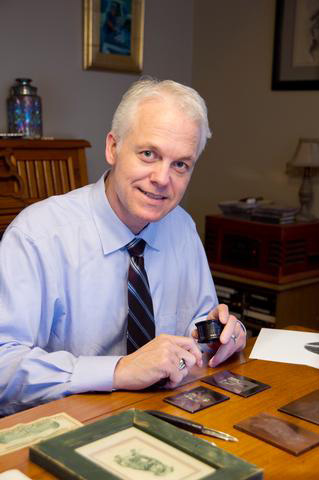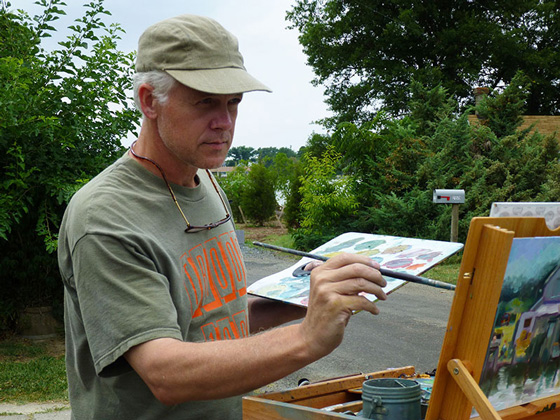Alumnus carves his way into U.S. history
Alumnus Christopher Madden engraving
Ever look closely at the portrait of Andrew Jackson on a $20 bill or the buildings and portraits featured on special edition coins? Those were all done by artists—and alumnus Christopher Madden happens to be among them.
Madden is a journeyman banknote engraver at the U.S. Bureau of Engraving and Printing (BEP). The position was well earned; Madden had completed a 10-year apprenticeship as a banknote picture engraver.
During his apprenticeship he served under a master engraver and developed a progressively more complex set of engraving and etching skills.
"At the end of 10 years I then became a member of a very small fraternity of highly skilled craftsmen whose methods and traditions can be traced back to many prominent early American artists such as Asher Durand, Walter Shirlaw, and Paul Revere," Madden said.
BEP focuses on the development and production of United States currency and other security instruments and is currently the largest producer of government security documents. They completely redesign the Federal Reserve Notes every seven to 10 years—primarily to head off counterfeiters and keep up with special edition pieces.
"Day to day we are in the early stages of designing and engraving concepts for future banknotes," Madden said. "For example, I recently engraved a new portrait of Andrew Jackson for future currency use and also had the honor of engraving the official portrait of President Barack Obama in 2009."
Madden’s work requires a level of secrecy along with a great deal of practice and dedication. Madden also points out that, in his opinion, this type of engraving is the strictest and most difficult manner of creating a picture in the world.
Alumnus Christopher Madden working on a plein air painting
“As an engraver, my mandate is to exactly translate a tonal model into matrices of lines, dots, and dashes cut into varying depths and widths that will print faithful images for both aesthetic and security purposes,” Madden explained.
“When my engraving is finished, the plate is used as part of an overall project, numbered, and securely placed into a main vault," Madden said.
Although his apprenticeship taught him details relevant to the engraving field, he thanks CCAD for prepping him for this professional path.
“The professors planted seeds in my mind that bore the fruit for me as an artist and engraver over the years,” Madden said. “They demanded a level of excellence and an ethic of thinking about design and methodology."
"Engraving is a beautiful and largely lost art/craft, but in reality I also need to accept that I am ultimately creating a product and not my own art," Madden said.
To counter that, Madden works on his own paintings. In the last few years he has taken up plein air painting and has a studio at the Griffin Art Center in Frederick, Maryland, where he also teaches classes.
“The biggest difference between my work as an engraver and my painting is I have total creative control over what I make and what I create [with painting],” Madden said. “Also, since engraving is such a demanding discipline, painting allows me to have that push-and-pull ability.”

